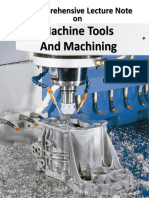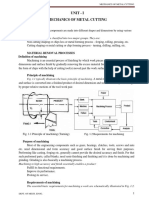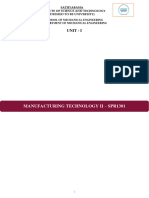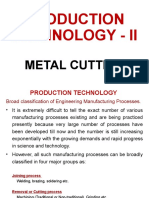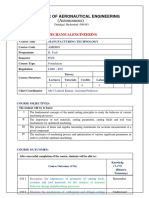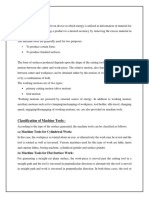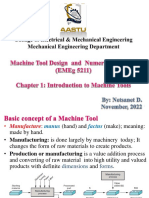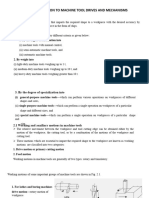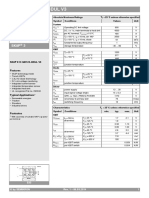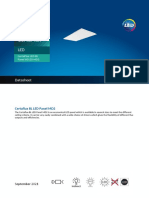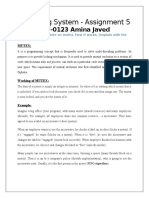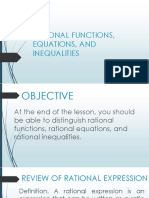0% found this document useful (0 votes)
75 views12 pagesChapter1 Itroduction To Machine Tools
This document provides an introduction to metal cutting machine tools. It discusses that machine tools are used to cut materials like metals into desired shapes using detachable cutting tools. It then classifies machine tools based on size, actuation method, purpose, type of motion used, and feed method. The document also outlines general requirements for machine tools including high productivity, accuracy, simplicity of design, safety and convenience of controls, and good appearance. It provides methods to improve each of these requirements such as reducing machining and non-productive time to improve productivity and using accurate components and limiting vibrations to improve accuracy.
Uploaded by
tsehay habesaCopyright
© © All Rights Reserved
We take content rights seriously. If you suspect this is your content, claim it here.
Available Formats
Download as PDF, TXT or read online on Scribd
0% found this document useful (0 votes)
75 views12 pagesChapter1 Itroduction To Machine Tools
This document provides an introduction to metal cutting machine tools. It discusses that machine tools are used to cut materials like metals into desired shapes using detachable cutting tools. It then classifies machine tools based on size, actuation method, purpose, type of motion used, and feed method. The document also outlines general requirements for machine tools including high productivity, accuracy, simplicity of design, safety and convenience of controls, and good appearance. It provides methods to improve each of these requirements such as reducing machining and non-productive time to improve productivity and using accurate components and limiting vibrations to improve accuracy.
Uploaded by
tsehay habesaCopyright
© © All Rights Reserved
We take content rights seriously. If you suspect this is your content, claim it here.
Available Formats
Download as PDF, TXT or read online on Scribd
/ 12





